|
|
 |
 |
|






|
 |
|
 April 1, 2015–Cynthia Lennon dies of cancer at her home in Mallorca, Spain, at age 75. She was married to John Lennon from 1962-1968. They had a son, Julian Lennon, who was born in 1963. She grew up in the middle-class section of Hoylake, on the Wirral Peninsula in North West England. At the age of 12, she was accepted into the Junior Art School, and was later enrolled in the Liverpool College of Art. John Lennon also attended the college and a meeting with Powell in a calligraphy class led to their relationship. In 1968, John left her for Japanese avant-garde conceptual artist, Yoko Ono. She published a book of memoirs, A Twist of Lennon, in 1978, and a more intimate biography, John, in 2005. Over the years, she staged several auctions of memorabilia associated with her life with John Lennon. April 1, 2015–Cynthia Lennon dies of cancer at her home in Mallorca, Spain, at age 75. She was married to John Lennon from 1962-1968. They had a son, Julian Lennon, who was born in 1963. She grew up in the middle-class section of Hoylake, on the Wirral Peninsula in North West England. At the age of 12, she was accepted into the Junior Art School, and was later enrolled in the Liverpool College of Art. John Lennon also attended the college and a meeting with Powell in a calligraphy class led to their relationship. In 1968, John left her for Japanese avant-garde conceptual artist, Yoko Ono. She published a book of memoirs, A Twist of Lennon, in 1978, and a more intimate biography, John, in 2005. Over the years, she staged several auctions of memorabilia associated with her life with John Lennon.
Read the complete history of April 1
 April 2, 1725–Giacomo (Girolamo) Casanova is born in Venice, Republic of Venice. Author of History of My Life and infamous as a philanderer, his surname would become synonymous with “womanizer” or “rogue” in the English language. Uncut, his memoirs ran to 12 volumes, and the abridged American translation runs to nearly 1,200 pages. Although his chronology is at times confusing and inaccurate, and many of his tales exaggerated, much of his narrative and many details are corroborated by contemporary writings. The manuscript of Casanova's memoirs was held by his relatives until it was sold to F.A. Brockhaus publishers, and first published in heavily abridged versions in German around 1822, then in French. During World War II, the manuscript survived the allied bombing of Leipzig. The memoirs were heavily pirated through the ages and have been translated into 20 languages. But the entire text was not published in its original language of French until 1960. In 2010, the manuscript was acquired by the National Library of France, and it has been digitized. April 2, 1725–Giacomo (Girolamo) Casanova is born in Venice, Republic of Venice. Author of History of My Life and infamous as a philanderer, his surname would become synonymous with “womanizer” or “rogue” in the English language. Uncut, his memoirs ran to 12 volumes, and the abridged American translation runs to nearly 1,200 pages. Although his chronology is at times confusing and inaccurate, and many of his tales exaggerated, much of his narrative and many details are corroborated by contemporary writings. The manuscript of Casanova's memoirs was held by his relatives until it was sold to F.A. Brockhaus publishers, and first published in heavily abridged versions in German around 1822, then in French. During World War II, the manuscript survived the allied bombing of Leipzig. The memoirs were heavily pirated through the ages and have been translated into 20 languages. But the entire text was not published in its original language of French until 1960. In 2010, the manuscript was acquired by the National Library of France, and it has been digitized.
Read the complete history of April 2
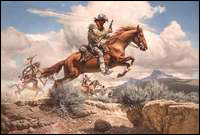 April 3, 1860–The first Pony Express carrying U.S. mail leaves both St. Joseph, Missouri and Sacramento, California, simultaneously. The western-bound post arrives a day and a half before the eastern bound. Each rider had a 75- to 100-mile run before a switch was made with another rider: the switch was made at one of 190 way stations along the route, with each way station being about 10 to 15 miles apart. The Pony Express riders delivered the mail within 10 days (quite similar to our current snail-mail) for postage of $5 per ounce. This style of mail service became antiquated within a short two years, being put out to pasture by the advent of the overland telegraph. April 3, 1860–The first Pony Express carrying U.S. mail leaves both St. Joseph, Missouri and Sacramento, California, simultaneously. The western-bound post arrives a day and a half before the eastern bound. Each rider had a 75- to 100-mile run before a switch was made with another rider: the switch was made at one of 190 way stations along the route, with each way station being about 10 to 15 miles apart. The Pony Express riders delivered the mail within 10 days (quite similar to our current snail-mail) for postage of $5 per ounce. This style of mail service became antiquated within a short two years, being put out to pasture by the advent of the overland telegraph.
Read the complete history of April 3
 April 4, 1968–Martin Luther King, Jr. is shot and killed on the balcony of the Lorraine Motel in Memphis, Tennessee, at age 39. His killer is James Earl Ray. Riots break out in 30 American cities, leaving 39 people dead. Soul singer, James Brown, goes on national television to urge restraint and a constructive channeling of anger. According to Jesse Jackson, who was present, King's last words on the balcony before his assassination were spoken to musician Ben Branch, who was scheduled to perform that night at an event King was attending: "Ben, make sure you play Take My Hand, Precious Lord in the meeting tonight. Play it real pretty." King was fatally shot at 6:01 p.m., and after emergency chest surgery, he died at St. Joseph's Hospital at 7:05 p.m. According to biographer, Taylor Branch, King's autopsy revealed that although he was only 39 years old, he "had the heart of a 60 year old," which Branch attributed to the stress of 13 years in the Civil Rights Movement. In New York, Jimi Hendrix, B.B. King, and Buddy Guy play an all-night tribute to the slain leader. April 4, 1968–Martin Luther King, Jr. is shot and killed on the balcony of the Lorraine Motel in Memphis, Tennessee, at age 39. His killer is James Earl Ray. Riots break out in 30 American cities, leaving 39 people dead. Soul singer, James Brown, goes on national television to urge restraint and a constructive channeling of anger. According to Jesse Jackson, who was present, King's last words on the balcony before his assassination were spoken to musician Ben Branch, who was scheduled to perform that night at an event King was attending: "Ben, make sure you play Take My Hand, Precious Lord in the meeting tonight. Play it real pretty." King was fatally shot at 6:01 p.m., and after emergency chest surgery, he died at St. Joseph's Hospital at 7:05 p.m. According to biographer, Taylor Branch, King's autopsy revealed that although he was only 39 years old, he "had the heart of a 60 year old," which Branch attributed to the stress of 13 years in the Civil Rights Movement. In New York, Jimi Hendrix, B.B. King, and Buddy Guy play an all-night tribute to the slain leader.
Read the complete history of April 4
 April 5, 1926–Movie director, Roger (William) Corman, is born in Detroit, Michigan. He has been called "The Pope of Pop Cinema," and is known as a trailblazer in the world of independent film. A number of noted film directors and producers worked with Corman (usually early in their careers), including Francis Ford Coppola, Martin Scorsese, Ron Howard, Peter Bogdanovich, Paul Bartel, Jonathan Demme, Joe Dante, James Cameron, John Sayles, Jonathan Kaplan, and Robert Towne. Actors who obtained their career breaks working for Corman include Jack Nicholson, Peter Fonda, Bruce Dern, Dennis Hopper, Talia Shire, Sandra Bullock, Robert De Niro, and David Carradine. His films include Swamp Women, Day the World Ended, Gunslinger, It Conquered the World, Not of This Earth, Attack of the Crab Monsters, The Undead, Teenage Caveman, The Wasp Woman, The Little Shop of Horrors, The Intruder, The Masque of the Red Death, The Wild Angels, The Trip, Bloody Mama, The Dunwich Horror, and Boxcar Bertha. April 5, 1926–Movie director, Roger (William) Corman, is born in Detroit, Michigan. He has been called "The Pope of Pop Cinema," and is known as a trailblazer in the world of independent film. A number of noted film directors and producers worked with Corman (usually early in their careers), including Francis Ford Coppola, Martin Scorsese, Ron Howard, Peter Bogdanovich, Paul Bartel, Jonathan Demme, Joe Dante, James Cameron, John Sayles, Jonathan Kaplan, and Robert Towne. Actors who obtained their career breaks working for Corman include Jack Nicholson, Peter Fonda, Bruce Dern, Dennis Hopper, Talia Shire, Sandra Bullock, Robert De Niro, and David Carradine. His films include Swamp Women, Day the World Ended, Gunslinger, It Conquered the World, Not of This Earth, Attack of the Crab Monsters, The Undead, Teenage Caveman, The Wasp Woman, The Little Shop of Horrors, The Intruder, The Masque of the Red Death, The Wild Angels, The Trip, Bloody Mama, The Dunwich Horror, and Boxcar Bertha.
Read the complete history of April 5
 April 6, 1954–The TV Dinner is introduced to the American public by Swanson & Sons. The first offering is roast turkey with stuffing and gravy, sweet potatoes, and peas. It sells for 98¢ and comes in an aluminum tray, so it can easily be heated in the oven. The dinners are an immediate success. Supposedly executive, Gerald Thomas, came up with the idea when the company had tons of leftover turkey from Thanksgiving. And the idea for the aluminum containers came from the trays used for airline food. Swanson would drop the term “TV dinner” in 1962. April 6, 1954–The TV Dinner is introduced to the American public by Swanson & Sons. The first offering is roast turkey with stuffing and gravy, sweet potatoes, and peas. It sells for 98¢ and comes in an aluminum tray, so it can easily be heated in the oven. The dinners are an immediate success. Supposedly executive, Gerald Thomas, came up with the idea when the company had tons of leftover turkey from Thanksgiving. And the idea for the aluminum containers came from the trays used for airline food. Swanson would drop the term “TV dinner” in 1962.
Read the complete history of April 6
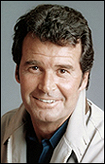 April 7, 1928–Actor, James Garner, is born James Scott Bumgarner in Norman, Oklahoma. He is best known for two successful TV series: Maverick and The Rockford Files. He appeared in the films Toward the Unknown, The Girl He Left Behind, Sayonara, Darby’s Rangers, Up Periscope, Cash McCall, The Children’s Hour, Boys’ Night Out, The Great Escape, The Thrill of It All, The Wheeler Dealers, Move Over Darling, The Americanization of Emily, 36 Hours, A Man Could Get Killed, Duel at Diablo, Mister Buddwing, Grand Prix, Hour of the Gun, How Sweet It Is, Support Your Local Sheriff, Skin Game, They Only Kill Their Masters, One Little Indian, The Castaway Cowboy, The Fan, Victor Victoria, Heartsounds, Tank, Murphy’s Romance, Promise, Sunset, My Name is Bill W., Decoration Day, The Distinguished Gentleman, Fire in the Sky, Barbarians at the Gate, Maverick, One Special Night, Space Cowboys, Divine Secrets of the Ya-Ya Sisterhood, and The Notebook. April 7, 1928–Actor, James Garner, is born James Scott Bumgarner in Norman, Oklahoma. He is best known for two successful TV series: Maverick and The Rockford Files. He appeared in the films Toward the Unknown, The Girl He Left Behind, Sayonara, Darby’s Rangers, Up Periscope, Cash McCall, The Children’s Hour, Boys’ Night Out, The Great Escape, The Thrill of It All, The Wheeler Dealers, Move Over Darling, The Americanization of Emily, 36 Hours, A Man Could Get Killed, Duel at Diablo, Mister Buddwing, Grand Prix, Hour of the Gun, How Sweet It Is, Support Your Local Sheriff, Skin Game, They Only Kill Their Masters, One Little Indian, The Castaway Cowboy, The Fan, Victor Victoria, Heartsounds, Tank, Murphy’s Romance, Promise, Sunset, My Name is Bill W., Decoration Day, The Distinguished Gentleman, Fire in the Sky, Barbarians at the Gate, Maverick, One Special Night, Space Cowboys, Divine Secrets of the Ya-Ya Sisterhood, and The Notebook.
Read the complete history of April 7
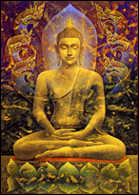 April 8, BC 563–Buddha, the Enlightened One, is born Siddhartha Gautama in Lumbini, Shakya Republic (present-day Nepal). Buddhism is founded on his teachings. He taught a "Middle Way" between sensual indulgence and the severe asceticism found in the sramama movement common in his region. Various collections of teachings attributed to him were passed down by oral tradition and first committed to writing about 400 years later. After sitting in meditation under the “Bodhi Tree,” for 49 days, he received Perfect Enlightenment at the age of 35. Gautama is said to have developed supramundane abilities, including: a painless birth conceived without intercourse; no need for sleep, food, medicine, or bathing, although engaging in such "in conformity with the world"; omniscience; and the ability to "suppress karma." Scholars are hesitant to make unqualified claims about the historical facts of the Buddha's life. Most accept that he lived, taught and founded a monastic order during the Mahajanapada era. April 8, BC 563–Buddha, the Enlightened One, is born Siddhartha Gautama in Lumbini, Shakya Republic (present-day Nepal). Buddhism is founded on his teachings. He taught a "Middle Way" between sensual indulgence and the severe asceticism found in the sramama movement common in his region. Various collections of teachings attributed to him were passed down by oral tradition and first committed to writing about 400 years later. After sitting in meditation under the “Bodhi Tree,” for 49 days, he received Perfect Enlightenment at the age of 35. Gautama is said to have developed supramundane abilities, including: a painless birth conceived without intercourse; no need for sleep, food, medicine, or bathing, although engaging in such "in conformity with the world"; omniscience; and the ability to "suppress karma." Scholars are hesitant to make unqualified claims about the historical facts of the Buddha's life. Most accept that he lived, taught and founded a monastic order during the Mahajanapada era.
Read the complete history of April 8
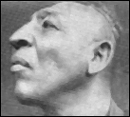 April 9, 1926–Freak show performer, Zip the Pinhead (William Henry Johnson), dies in New York, New York, at age 83. His funeral was attended by the greatest side show acts of the days, including Lady Olga Roderick (the Bearded Lady) Frank Graf (the Tattooed Man), and many more. At the side shows, he was billed as a missing link, supposedly caught in Africa and displayed in a cage. He was a popular draw, and his success led to his management by showman, P.T. Barnum. In later years, Zip became more "civilized" in his act. He shared the stage with other anomalies, including his friends Jim Tarver (the Texas Giant, Jack Earle (the Tallest Man in the World), Koo-Koo the Bird Girl, and many others. Zip also traveled extensively with the Ringling Brothers circus. He is partly the inspiration for Bill Griffith's comics character, "Zippy the Pinhead." April 9, 1926–Freak show performer, Zip the Pinhead (William Henry Johnson), dies in New York, New York, at age 83. His funeral was attended by the greatest side show acts of the days, including Lady Olga Roderick (the Bearded Lady) Frank Graf (the Tattooed Man), and many more. At the side shows, he was billed as a missing link, supposedly caught in Africa and displayed in a cage. He was a popular draw, and his success led to his management by showman, P.T. Barnum. In later years, Zip became more "civilized" in his act. He shared the stage with other anomalies, including his friends Jim Tarver (the Texas Giant, Jack Earle (the Tallest Man in the World), Koo-Koo the Bird Girl, and many others. Zip also traveled extensively with the Ringling Brothers circus. He is partly the inspiration for Bill Griffith's comics character, "Zippy the Pinhead."
Read the complete history of April 9
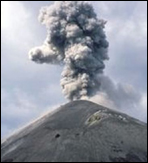 April 10, 1815–The largest volcanic eruption in recorded history occurs at Mount Tambora, on the island of Sumbawa, Indonesia. The explosion is heard more than 1,200 miles away on the island of Sumatra, with heavy volcanic ash falls observed as far away as Borneo, Sulawesi, and Java. The death toll is estimated to be 71,000 people, of which approximately 12,000 are killed by the eruption itself. As a result of the volcanic ash generated by the eruption, 1816 would become known as the “Year Without Summer,” as volcanic winter descended on the Northern hemisphere. Widespread crop failure and livestock deaths throughout Europe and North America resulted in the worst famine of the 19th Century. April 10, 1815–The largest volcanic eruption in recorded history occurs at Mount Tambora, on the island of Sumbawa, Indonesia. The explosion is heard more than 1,200 miles away on the island of Sumatra, with heavy volcanic ash falls observed as far away as Borneo, Sulawesi, and Java. The death toll is estimated to be 71,000 people, of which approximately 12,000 are killed by the eruption itself. As a result of the volcanic ash generated by the eruption, 1816 would become known as the “Year Without Summer,” as volcanic winter descended on the Northern hemisphere. Widespread crop failure and livestock deaths throughout Europe and North America resulted in the worst famine of the 19th Century.
Read the complete history of April 10
April 11, 1890–Joseph Merrick, "The Elephant Man," dies of asphyxia in London Hospital, Whitechapel, London, England, at age 27. It is believed that Merrick (who had to sleep sitting up because of the weight of his head) had been attempting to sleep lying down, to "be like other people." He had severe deformities and was exhibited as a human curiosity named the Elephant Man. He became well known in London society after he went to live at the London Hospital. Merrick began to develop abnormally during the first few years of his life: his skin appeared thick and lumpy, he developed enlarged lips, and a bony lump grew on his forehead. One of his arms and both of his feet became enlarged, and at some point during his childhood he fell and damaged his hip, resulting in permanent lameness. Although his condition was incurable, Merrick was allowed to stay at London Hospital for the remainder of his life. In 1979, Bernard Pomerance's play about Merrick, The Elephant Man, debuted, and David Lynch's film (also called The Elephant Man), was released the following year.
Read the complete history of April 11
 April 12, 1945–President Franklin Delano Roosevelt dies of a cerebral hemorrhage in his home at Warm Springs, Georgia, at age 63. At the time he collapsed from the stroke, Roosevelt had been sitting for a portrait by the artist Elizabeth Shoumatoff; the painting is known as the famous “Unfinished Portrait of FDR.” The only man to be elected to four terms as President of the United States, Roosevelt is remembered, by friends and enemies alike, for his “New Deal” social policies and his leadership during wartime. Upon Roosevelt’s death, Harry S. Truman is sworn in as the 33rd U.S. President. April 12, 1945–President Franklin Delano Roosevelt dies of a cerebral hemorrhage in his home at Warm Springs, Georgia, at age 63. At the time he collapsed from the stroke, Roosevelt had been sitting for a portrait by the artist Elizabeth Shoumatoff; the painting is known as the famous “Unfinished Portrait of FDR.” The only man to be elected to four terms as President of the United States, Roosevelt is remembered, by friends and enemies alike, for his “New Deal” social policies and his leadership during wartime. Upon Roosevelt’s death, Harry S. Truman is sworn in as the 33rd U.S. President.
Read the complete history of April 12
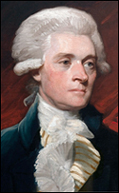 April 13, 1743–Thomas Jefferson, third President of the United States (1801-1809), is born in Shadwell, Colony of Virginia, British America. He was an American Founding Father who was principal author of the Declaration of Independence. He became the U.S. Minister to France in May 1785, and subsequently the nation's first Secretary of State in 1790-1793, under President George Washington. Jefferson and James Madison organized the Democratic-Republican Party to oppose the Federalist Party during the formation of the First Party System. As a visionary, Jefferson made the Lousiana Purchase, increasing the size and growth of America. Among his many inventions, is the swivel chair, the first of which he created and used to write much of the Declaration of Independence. April 13, 1743–Thomas Jefferson, third President of the United States (1801-1809), is born in Shadwell, Colony of Virginia, British America. He was an American Founding Father who was principal author of the Declaration of Independence. He became the U.S. Minister to France in May 1785, and subsequently the nation's first Secretary of State in 1790-1793, under President George Washington. Jefferson and James Madison organized the Democratic-Republican Party to oppose the Federalist Party during the formation of the First Party System. As a visionary, Jefferson made the Lousiana Purchase, increasing the size and growth of America. Among his many inventions, is the swivel chair, the first of which he created and used to write much of the Declaration of Independence.
Read the complete history of April 13
 April 14, 1828–Lexicographer, Noah Webster, receives the copyright for his American Dictionary of the English Language, on which he had worked alone for more than 35 years. It is the first truly American dictionary, featuring American spelling, punctuation, and pronunciation. To evaluate the etymology of words, Webster learned 28 languages, including Old English (Anglo-Saxon), Gothic, German, Greek, Latin, Italian, Spanish, French, Dutch, Welsh, Russian, Hebrew, Aramaic, Persian, Arabic, and Sanskrit. He was a textbook pioneer, English-language spelling reformer, political writer, editor, and prolific author. He has been called the "Father of American Scholarship and Education." His blue-backed speller books taught five generations of American children how to spell and read. Webster's name has become synonymous with "dictionary" in the United States. April 14, 1828–Lexicographer, Noah Webster, receives the copyright for his American Dictionary of the English Language, on which he had worked alone for more than 35 years. It is the first truly American dictionary, featuring American spelling, punctuation, and pronunciation. To evaluate the etymology of words, Webster learned 28 languages, including Old English (Anglo-Saxon), Gothic, German, Greek, Latin, Italian, Spanish, French, Dutch, Welsh, Russian, Hebrew, Aramaic, Persian, Arabic, and Sanskrit. He was a textbook pioneer, English-language spelling reformer, political writer, editor, and prolific author. He has been called the "Father of American Scholarship and Education." His blue-backed speller books taught five generations of American children how to spell and read. Webster's name has become synonymous with "dictionary" in the United States.
Read the complete history of April 14
 April 15, 1452–Artist, Leonardo da Vinci, is born Leonardo di ser Piero da Vinci in the Republic of Florence, Italy. As a painter, sculptor, architect, mathematician, engineer, inventor, musician, philosopher, scientist, cartographer, and writer, he was the ultimate “Renaissance Man.” Leonardo da Vinci is widely thought to be the most diversely creative individual who ever lived. Predominantly revered for his painting, his most famous works include the “Mona Lisa” and “The Last Supper.” But his notebooks reveal a creative genius who made scientific drawings of flying machines, solar power, contact lenses, and other inventions that would not be possible for centuries. Just over a dozen of da Vinci's paintings still survive, due in part to his predilection for experimenting with new techniques, which at times proved disastrous. His body of work, however, constitutes a profound contribution to future generations, equaled only by that of his contemporary, Michelangelo. April 15, 1452–Artist, Leonardo da Vinci, is born Leonardo di ser Piero da Vinci in the Republic of Florence, Italy. As a painter, sculptor, architect, mathematician, engineer, inventor, musician, philosopher, scientist, cartographer, and writer, he was the ultimate “Renaissance Man.” Leonardo da Vinci is widely thought to be the most diversely creative individual who ever lived. Predominantly revered for his painting, his most famous works include the “Mona Lisa” and “The Last Supper.” But his notebooks reveal a creative genius who made scientific drawings of flying machines, solar power, contact lenses, and other inventions that would not be possible for centuries. Just over a dozen of da Vinci's paintings still survive, due in part to his predilection for experimenting with new techniques, which at times proved disastrous. His body of work, however, constitutes a profound contribution to future generations, equaled only by that of his contemporary, Michelangelo.
Read the complete history of April 15
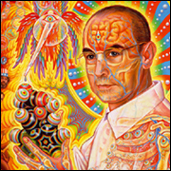 April 16, 1943–In Basel, Switzerland, Albert Hoffman, a Swiss chemist working at the Sandoz pharmaceutical research laboratory, accidentally consumes LSD-25, a synthetic drug he had created in 1938 as part of his research into the medicinal value of lysergic acid compounds. A tiny amount of the substance accidentally seeped through the skin of his finger. After taking the drug, formally known as lysergic acid diethylamide, Dr. Hoffman was disturbed by unusual sensations and hallucinations. In his notes, he related the experience: "Last Friday, April 16, 1943, I was forced to interrupt my work in the laboratory in the middle of the afternoon and proceed home, being affected by a remarkable restlessness, combined with a slight dizziness. At home I lay down and sank into a not unpleasant, intoxicated-like condition, characterized by an extremely stimulated imagination. In a dreamlike state, with eyes closed (I found the daylight to be unpleasantly glaring), I perceived an uninterrupted stream of fantastic pictures, extraordinary shapes with intense, kaleidoscopic play of colors. After some two hours this condition faded away." After intentionally taking the drug again to confirm that it had caused this strange physical and mental state, Dr. Hoffman published a report announcing his discovery, and so LSD made its entry into the world as a hallucinogenic drug. Widespread use of the so-called "mind-expanding" drug did not begin until the 1960s, when counterculture figures such as Albert M. Hubbard, Timothy Leary, Ken Kesey, and The Beatles publicly expounded on the benefits of using LSD as a recreational drug. The manufacture, sale, possession, and use of LSD, known to cause negative reactions in some of those who take it, were made illegal in the United States in 1965. April 16, 1943–In Basel, Switzerland, Albert Hoffman, a Swiss chemist working at the Sandoz pharmaceutical research laboratory, accidentally consumes LSD-25, a synthetic drug he had created in 1938 as part of his research into the medicinal value of lysergic acid compounds. A tiny amount of the substance accidentally seeped through the skin of his finger. After taking the drug, formally known as lysergic acid diethylamide, Dr. Hoffman was disturbed by unusual sensations and hallucinations. In his notes, he related the experience: "Last Friday, April 16, 1943, I was forced to interrupt my work in the laboratory in the middle of the afternoon and proceed home, being affected by a remarkable restlessness, combined with a slight dizziness. At home I lay down and sank into a not unpleasant, intoxicated-like condition, characterized by an extremely stimulated imagination. In a dreamlike state, with eyes closed (I found the daylight to be unpleasantly glaring), I perceived an uninterrupted stream of fantastic pictures, extraordinary shapes with intense, kaleidoscopic play of colors. After some two hours this condition faded away." After intentionally taking the drug again to confirm that it had caused this strange physical and mental state, Dr. Hoffman published a report announcing his discovery, and so LSD made its entry into the world as a hallucinogenic drug. Widespread use of the so-called "mind-expanding" drug did not begin until the 1960s, when counterculture figures such as Albert M. Hubbard, Timothy Leary, Ken Kesey, and The Beatles publicly expounded on the benefits of using LSD as a recreational drug. The manufacture, sale, possession, and use of LSD, known to cause negative reactions in some of those who take it, were made illegal in the United States in 1965.
Read the complete history of April 16
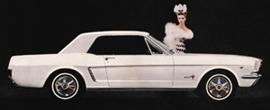 April 17, 1964–The Ford Motor Company formally introduces the 1995 Mustang at the World’s Fair in New York. It has a base price of $2,368. The original 1962 Ford Mustang I two-seater concept car had evolved into the 1963 Mustang II four-seater concept car, which Ford used to pretest how the public would take interest in the first production Mustang. The 1963 Mustang II concept car was designed with a variation of the production model's front and rear ends with a roof that was 2.7 inches shorter. The 1965 Mustang was the automaker's most successful launch since the Model A. Executive stylist, John Najjar, who was a fan of the World War II P-51 Mustang fighter plane, is credited by Ford to have suggested the car’s name. Najjar co-designed the first prototype of the Ford Mustang known as Ford Mustang I in 1961, working jointly with fellow Ford stylist, Philip T. Clark. The Mustang gave rise to competitors such as the Chevrolet Camaro, Pontiac Firebird, AMC Javelin, Chrysler's revamped Plymouth Barracuda, and the first generation Dodge Challenger. The Mustang has undergone several transformations to its current sixth generation. April 17, 1964–The Ford Motor Company formally introduces the 1995 Mustang at the World’s Fair in New York. It has a base price of $2,368. The original 1962 Ford Mustang I two-seater concept car had evolved into the 1963 Mustang II four-seater concept car, which Ford used to pretest how the public would take interest in the first production Mustang. The 1963 Mustang II concept car was designed with a variation of the production model's front and rear ends with a roof that was 2.7 inches shorter. The 1965 Mustang was the automaker's most successful launch since the Model A. Executive stylist, John Najjar, who was a fan of the World War II P-51 Mustang fighter plane, is credited by Ford to have suggested the car’s name. Najjar co-designed the first prototype of the Ford Mustang known as Ford Mustang I in 1961, working jointly with fellow Ford stylist, Philip T. Clark. The Mustang gave rise to competitors such as the Chevrolet Camaro, Pontiac Firebird, AMC Javelin, Chrysler's revamped Plymouth Barracuda, and the first generation Dodge Challenger. The Mustang has undergone several transformations to its current sixth generation.
Read the complete history of April 17
 April 18, 1906–The Great San Francisco earthquake strikes the city at 5:12 a.m. The 8.2 quake and resulting fires devastate the city, killing 4,000 people and leaving over 200,000 people homeless. The death toll is the highest in any natural disaster in California history. The fires are caused due to broken gas lines, which continue to burn for several days. Approximately 80% of the city is destroyed. Severe shaking is felt from Eureka on the North Coast to the Salinas Valley, an agricultural region to the south of the San Francisco Bay Area. The San Andreas Fault is a continental transform fault that forms part of the tectonic boundary between the Pacific Plate and the North American Plate. The 1906 rupture propagated both northward and southward for a total of 296 miles. This fault runs the length of California from the Salton Sea in the south to Cape Mendocino in the north, a distance of about 810 miles. The 1906 earthquake preceded the development of the Richter magnitude scale by three decades. April 18, 1906–The Great San Francisco earthquake strikes the city at 5:12 a.m. The 8.2 quake and resulting fires devastate the city, killing 4,000 people and leaving over 200,000 people homeless. The death toll is the highest in any natural disaster in California history. The fires are caused due to broken gas lines, which continue to burn for several days. Approximately 80% of the city is destroyed. Severe shaking is felt from Eureka on the North Coast to the Salinas Valley, an agricultural region to the south of the San Francisco Bay Area. The San Andreas Fault is a continental transform fault that forms part of the tectonic boundary between the Pacific Plate and the North American Plate. The 1906 rupture propagated both northward and southward for a total of 296 miles. This fault runs the length of California from the Salton Sea in the south to Cape Mendocino in the north, a distance of about 810 miles. The 1906 earthquake preceded the development of the Richter magnitude scale by three decades.
Read the complete history of April 18
 April 19, 1933–Actress and sex symbol, Jayne Mansfield, is born Vera Jane Palmer in Bryn Mawr, Pennsylvania. She was the B-movie Marilyn Monroe, until her untimely death in an automobile accident on the Lake Ponchartrain Bridge near New Orleans, Louisiana. She appeared in the films Pete Kelly’s Blues, Female Jungle, The Girl Can’t Help It, The Wayward Bus, The Burglar, Will Success Spoil Rock Hunter?, Kiss Them for me, The Sheriff of Fractured Jaw, It Takes a Thief, Promises! Promises!, Single Room Furnished, and A Guide for the Married Man. She was married to bodybuilder, Mickey Hargitay, and their daughter is actress, Mariska Hargitay. April 19, 1933–Actress and sex symbol, Jayne Mansfield, is born Vera Jane Palmer in Bryn Mawr, Pennsylvania. She was the B-movie Marilyn Monroe, until her untimely death in an automobile accident on the Lake Ponchartrain Bridge near New Orleans, Louisiana. She appeared in the films Pete Kelly’s Blues, Female Jungle, The Girl Can’t Help It, The Wayward Bus, The Burglar, Will Success Spoil Rock Hunter?, Kiss Them for me, The Sheriff of Fractured Jaw, It Takes a Thief, Promises! Promises!, Single Room Furnished, and A Guide for the Married Man. She was married to bodybuilder, Mickey Hargitay, and their daughter is actress, Mariska Hargitay.
Read the complete history of April 19
April 20, 2011–Screenwriter, Madelyn Pugh, dies in Bel Air, California, at age 90. She was a television writer who became known in the 1950s for her work on the sitcom I Love Lucy. Pugh and Bob Carroll, Jr. are credited with helping create the “Lucy” character, which Lucille Ball played in one form or another for over 40 years. The pair also wrote episodes for The Lucy Show, Here's Lucy, The Lucille Ball-Desi Arnaz Show (aka The Lucy-Desi Comedy Hour), and Ball's final series Life With Lucy.
Read the complete history of April 20
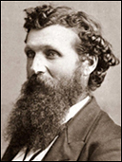 April 21, 1838–Naturalist, John Muir, is born in Dunbar, East Lothian, Scotland. His family emigrated to America when he was 11, settling in Wisconsin. He was a naturalist, author, environmental philosopher, and early advocate of preservation of wilderness in the United States. His letters, essays, and books telling of his adventures in nature, especially in the Sierra Nevada of California, have been read by millions. His activism helped to preserve the Yosemite Valley, Sequoia National Park, and other wilderness areas. The Sierra Club, which he founded, is a prominent American conservation organization. Places names in his honor include Muir Woods National Monument, Muir Beach, John Muir College, Mount Muir, Camp Muir, Muir Glacier, and John Muir Way in Scotland. He is considered the "father of the modern-day conservation movement." April 21, 1838–Naturalist, John Muir, is born in Dunbar, East Lothian, Scotland. His family emigrated to America when he was 11, settling in Wisconsin. He was a naturalist, author, environmental philosopher, and early advocate of preservation of wilderness in the United States. His letters, essays, and books telling of his adventures in nature, especially in the Sierra Nevada of California, have been read by millions. His activism helped to preserve the Yosemite Valley, Sequoia National Park, and other wilderness areas. The Sierra Club, which he founded, is a prominent American conservation organization. Places names in his honor include Muir Woods National Monument, Muir Beach, John Muir College, Mount Muir, Camp Muir, Muir Glacier, and John Muir Way in Scotland. He is considered the "father of the modern-day conservation movement."
Read the complete history of April 21
 April 22, 1889–Oklahoma Territory lands formerly reserved for Native Americans are opened to white homesteaders by President Harrison. At high noon, thousands rush to claim land in the Land Run of 1889. Within hours, the cities of Oklahoma City and Guthrie are formed with populations of at least 10,000. This land run led to today's Canadian, Cleveland, Kingfisher, Logan, Oklahoma, and Payne counties of Oklahoma. After the U.S. Congress finally agreed to open what was dubbed the Unassigned Lands, seven land runs in all took place in Oklahoma. The 1889 and 1893 Oklahoma Land Runs were portrayed in Edna Ferber's 1929 novel, Cimarron, as well as the 1931 and 1960 films of the same name. The Cherokee Strip Land Run of 1893 was portrayed in the films Tumbleweeds and Far and Away, and in the 1969 novel, The Thundering Prairie, by M.A. Hancock. April 22, 1889–Oklahoma Territory lands formerly reserved for Native Americans are opened to white homesteaders by President Harrison. At high noon, thousands rush to claim land in the Land Run of 1889. Within hours, the cities of Oklahoma City and Guthrie are formed with populations of at least 10,000. This land run led to today's Canadian, Cleveland, Kingfisher, Logan, Oklahoma, and Payne counties of Oklahoma. After the U.S. Congress finally agreed to open what was dubbed the Unassigned Lands, seven land runs in all took place in Oklahoma. The 1889 and 1893 Oklahoma Land Runs were portrayed in Edna Ferber's 1929 novel, Cimarron, as well as the 1931 and 1960 films of the same name. The Cherokee Strip Land Run of 1893 was portrayed in the films Tumbleweeds and Far and Away, and in the 1969 novel, The Thundering Prairie, by M.A. Hancock.
Read the complete history of April 22
 April 23, 1564–William Shakespeare is born in Stratford-upon-Avon, Warwickshire, West Midlands, England, in a modest room above the shop on Henley Street where his father made and sold gloves. As a teenager, he married Anne Hathaway, an older woman. They had three children before Shakespeare went off to London to achieve greatness in the theater. By 1595, he was acting and writing plays for a theater company called the Lord Chamberlain's Men, and in 1599, he became a part-owner of the Globe Playhouse. Shakespeare returned to Stratford in about 1610, having written 37 plays and 154 sonnets. Stratford-on-Avon is now the second most popular tourist destination in England, after the city of London. Shakespeare is widely regarded as the greatest writer in the English language and the world's pre-eminent dramatist. His plays have been translated into every major living language and are performed more often than those of any other playwright. His major works include The Two Gentlemen of Verona, The Taming of the Shrew, The Comedy of Errors, Romeo and Juliet, A Midsummer Night's Dream, The Merchant of Venice, Much Ado About Nothing, Julius Caesar, As You Like It, Hamlet, Twelfth Night, Othello, All's Well That Ends Well, King Lear, Macbeth, Antony and Cleopatra, The Winter's Tale, The Tempest, and Henry VIII. April 23, 1564–William Shakespeare is born in Stratford-upon-Avon, Warwickshire, West Midlands, England, in a modest room above the shop on Henley Street where his father made and sold gloves. As a teenager, he married Anne Hathaway, an older woman. They had three children before Shakespeare went off to London to achieve greatness in the theater. By 1595, he was acting and writing plays for a theater company called the Lord Chamberlain's Men, and in 1599, he became a part-owner of the Globe Playhouse. Shakespeare returned to Stratford in about 1610, having written 37 plays and 154 sonnets. Stratford-on-Avon is now the second most popular tourist destination in England, after the city of London. Shakespeare is widely regarded as the greatest writer in the English language and the world's pre-eminent dramatist. His plays have been translated into every major living language and are performed more often than those of any other playwright. His major works include The Two Gentlemen of Verona, The Taming of the Shrew, The Comedy of Errors, Romeo and Juliet, A Midsummer Night's Dream, The Merchant of Venice, Much Ado About Nothing, Julius Caesar, As You Like It, Hamlet, Twelfth Night, Othello, All's Well That Ends Well, King Lear, Macbeth, Antony and Cleopatra, The Winter's Tale, The Tempest, and Henry VIII.
Read the complete history of April 23
 April 24, BC 1184–Greeks enter Troy using the Trojan Horse. In the canonical version of the event, after a fruitless 10-year siege, the Greeks constructed a huge wooden horse, and hide a select force of men inside. The Greeks then pretend to sail away, and the Trojans pull the horse into their city as a victory trophy. That night the Greek force creeps out of the horse and opens the gates for the rest of the Greek army, which had sailed back under cover of night. The Greeks enter and destroy the city of Troy, ending the war. The main ancient source for the story is the Aeneid of Virgil, a Latin epic poem from the time of Augustus. The event is also referred to in Homer's Odyssey. Metaphorically, a "Trojan Horse" has come to mean any trick or stratagem that causes a target to invite a foe into a securely protected bastion or place. A malicious computer program, which tricks users into willingly running it, is also called a "Trojan horse.” April 24, BC 1184–Greeks enter Troy using the Trojan Horse. In the canonical version of the event, after a fruitless 10-year siege, the Greeks constructed a huge wooden horse, and hide a select force of men inside. The Greeks then pretend to sail away, and the Trojans pull the horse into their city as a victory trophy. That night the Greek force creeps out of the horse and opens the gates for the rest of the Greek army, which had sailed back under cover of night. The Greeks enter and destroy the city of Troy, ending the war. The main ancient source for the story is the Aeneid of Virgil, a Latin epic poem from the time of Augustus. The event is also referred to in Homer's Odyssey. Metaphorically, a "Trojan Horse" has come to mean any trick or stratagem that causes a target to invite a foe into a securely protected bastion or place. A malicious computer program, which tricks users into willingly running it, is also called a "Trojan horse.”
Read the complete history of April 24
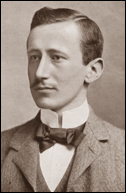 April 25, 1874–Physicist, Guglielmo Marconi, is born Guglielmo Giovanni Maria Marconi at Palazzo Marescalchi in Bologna, Italy. He was an inventor and electrical engineer, known for his pioneering work on long-distance radio transmission and for his development of Marconi's Law and a radio telegraph system. He is often credited as the inventor of radio, and he shared the 1909 Nobel Prize in Physics with Karl Ferdinand Braun "in recognition of their contributions to the development of wireless telegraphy." April 25, 1874–Physicist, Guglielmo Marconi, is born Guglielmo Giovanni Maria Marconi at Palazzo Marescalchi in Bologna, Italy. He was an inventor and electrical engineer, known for his pioneering work on long-distance radio transmission and for his development of Marconi's Law and a radio telegraph system. He is often credited as the inventor of radio, and he shared the 1909 Nobel Prize in Physics with Karl Ferdinand Braun "in recognition of their contributions to the development of wireless telegraphy."
Read the complete history of April 25
April 26, 1877–The state of Minnesota holds a day of prayer to plead for an end to a four-year plague of Rocky Mountain locusts. In southwestern Minnesota, locusts had been eating crops, trees, tobacco, fence posts, leather, dead animals, and sheep's wool. Two days later, a snowstorm moves through and the locusts are never seen again. No one knows what caused the plague, or why the Rocky Mountain locust became extinct afterwards.
Read the complete history of April 26
 April 27, 1791–Samuel F.B. Morse, the inventor of the telegraph, is born in Charlestown, Massachusetts. He was educated at Yale College, studying religious philosophy and mathematics, where he also attended lectures on electricity. While at Yale, he supported himself by painting, graduating in 1810, with Phi Beta Kappa honors. He went on to study painting at the Royal Academy in London, ultimately establishing himself as a portrait painter, earning commissions to paint President James Monroe and the Marquis de Lafayette. He continued his studies, traveled through Europe, and was a founder of the National Academy of Design in New York City, where he served as President for 20 years. A chance meeting with a scientist on a return voyage from Europe started him thinking about electromagnetism, resulting in the concept of a single-wire telegraph. In middle age, he set aside his painting, and developed the Morse code and telegraph for which he is best known. April 27, 1791–Samuel F.B. Morse, the inventor of the telegraph, is born in Charlestown, Massachusetts. He was educated at Yale College, studying religious philosophy and mathematics, where he also attended lectures on electricity. While at Yale, he supported himself by painting, graduating in 1810, with Phi Beta Kappa honors. He went on to study painting at the Royal Academy in London, ultimately establishing himself as a portrait painter, earning commissions to paint President James Monroe and the Marquis de Lafayette. He continued his studies, traveled through Europe, and was a founder of the National Academy of Design in New York City, where he served as President for 20 years. A chance meeting with a scientist on a return voyage from Europe started him thinking about electromagnetism, resulting in the concept of a single-wire telegraph. In middle age, he set aside his painting, and developed the Morse code and telegraph for which he is best known.
Read the complete history of April 27
April 28, 1908–Industrialist, Oskar Schindler, is born in Zwittau, Moravia, Austria-Hungary (present-day Svitavy, Czech Republic). He was a spy and member of the Nazi Party who is credited with saving the lives of 1,200 Jews during the Holocaust: he employed them in his enamelware and ammunitions factories, which were located in occupied Poland and the Protectorate of Bohemia and Moravia. He is the subject of the 1982 novel, Schindler's Ark, and the subsequent 1993 film Schindler's List.
Read the complete history of April 28
 April 29, 1980–Film director, Alfred Hitchcock, dies of renal failure in Bel Air, California, at age 80. He is known as "The Master of Suspense," as he pioneered many elements of the suspense and psychological thriller genres. He had a successful career in British cinema with both silent films and early talkies and became renowned as England's best director. Hitchcock moved to Hollywood in 1939, and became a U.S. citizen in 1955. He presented two TV series in the 1960s: Alfred Hitchcock Presents and The Alfred Hitchcock Hour. Hitchcock's stylistic trademarks include the use of camera movement that mimics a person's gaze, forcing viewers to engage in a form of voyeurism. In addition, he framed shots to maximise anxiety, fear, or empathy, and used innovative forms of film editing. His films include The 39 Steps, Sabotage, The Lady Vanishes, Foreign Correspondent, Suspicion, Saboteur, Shadow of a Doubt, Lifeboat, Spellbound, Notorious, Rope, Strangers on a Train, I Confess, Dial M for Murder, Rear Window, To Catch a Thief, The Trouble with Harry, The Man Who Knew Too Much, The Wrong Man, Vertigo, North by Northwest, Psycho, The Birds, Marnie, and Torn Curtain. April 29, 1980–Film director, Alfred Hitchcock, dies of renal failure in Bel Air, California, at age 80. He is known as "The Master of Suspense," as he pioneered many elements of the suspense and psychological thriller genres. He had a successful career in British cinema with both silent films and early talkies and became renowned as England's best director. Hitchcock moved to Hollywood in 1939, and became a U.S. citizen in 1955. He presented two TV series in the 1960s: Alfred Hitchcock Presents and The Alfred Hitchcock Hour. Hitchcock's stylistic trademarks include the use of camera movement that mimics a person's gaze, forcing viewers to engage in a form of voyeurism. In addition, he framed shots to maximise anxiety, fear, or empathy, and used innovative forms of film editing. His films include The 39 Steps, Sabotage, The Lady Vanishes, Foreign Correspondent, Suspicion, Saboteur, Shadow of a Doubt, Lifeboat, Spellbound, Notorious, Rope, Strangers on a Train, I Confess, Dial M for Murder, Rear Window, To Catch a Thief, The Trouble with Harry, The Man Who Knew Too Much, The Wrong Man, Vertigo, North by Northwest, Psycho, The Birds, Marnie, and Torn Curtain.
Read the complete history of April 29
 April 30, 1803–The United States doubles in size through the Louisiana Purchase, which President Thomas Jefferson bought for $15 million. This was the acquisition of the Louisiana territory (828,000 square miles) by the United States from France. The U.S. paid 50 million francs ($11,250,000) and a cancellation of debts worth 18 million francs ($3,750,000) for a total of 68 million francs ($15,000,000 or around a quarter of a billion in 2016 dollars). The Louisiana territory included land from 15 present U.S. states and two Canadian provinces. The territory contained land that forms Arkansas, Missouri, Iowa, Oklahoma, Kansas, and Nebraska; the portion of Minnesota west of the Mississippi River; a large portion of North Dakota; a large portion of South Dakota; the northeastern section of New Mexico; the northern portion of Texas; the area of Montana, Wyoming, and Colorado east of the Continental Divide; Louisiana west of the Mississippi River (plus New Orleans); and small portions of land within the present Canadian provinces of Alberta and Saskatchewan. Its non-native population was around 60,000 inhabitants, of whom half were African slaves. April 30, 1803–The United States doubles in size through the Louisiana Purchase, which President Thomas Jefferson bought for $15 million. This was the acquisition of the Louisiana territory (828,000 square miles) by the United States from France. The U.S. paid 50 million francs ($11,250,000) and a cancellation of debts worth 18 million francs ($3,750,000) for a total of 68 million francs ($15,000,000 or around a quarter of a billion in 2016 dollars). The Louisiana territory included land from 15 present U.S. states and two Canadian provinces. The territory contained land that forms Arkansas, Missouri, Iowa, Oklahoma, Kansas, and Nebraska; the portion of Minnesota west of the Mississippi River; a large portion of North Dakota; a large portion of South Dakota; the northeastern section of New Mexico; the northern portion of Texas; the area of Montana, Wyoming, and Colorado east of the Continental Divide; Louisiana west of the Mississippi River (plus New Orleans); and small portions of land within the present Canadian provinces of Alberta and Saskatchewan. Its non-native population was around 60,000 inhabitants, of whom half were African slaves.
Read the complete history of April 30
PHOTOS FROM TOP TO BOTTOM: Cynthia Lennon; Giacomo Casanova; image of the Pony Express; Martin Luther King, Jr.; Roger Corman; a circa 1950s TV dinner; James Garner; the Buddha; Zip the Pinhead; Mount Tambora; Franklin Delano Roosevelt; Thomas Jefferson; the American Dictionary of the English Language; Leonardo da Vinci; psychedelic artwork depicting Albert Hoffman who discovered LSD; the 1965 Ford Mustang; the Great San Francisco Earthquake; Jayne Mansfield; John Muir; the Oklahoma Land Run of 1889; William Shakespeare; the Trojan Horse; Guglielmo Marconi; Samuel F.B. Morse; Alfred Hitchcock; and a map of the Louisiana Purchase.
|
|
 |
|
 |
|
 |
|
 |
|
|